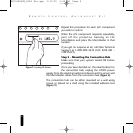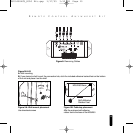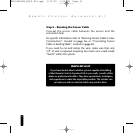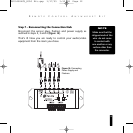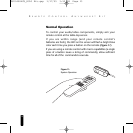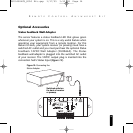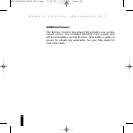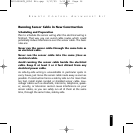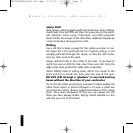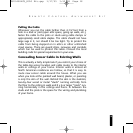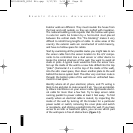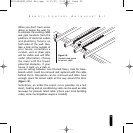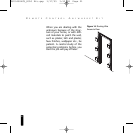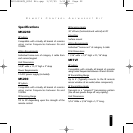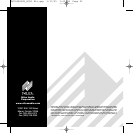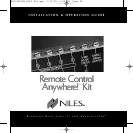
R
EMOTE
C
ONTROL
A
NYWHERE
! K
IT
Pulling the Cable
Whenever you run the cable farther than 4-1/2 feet from a
hole in a stud or joist (open attic space, going up walls, etc.),
fasten the cable to the joists or studs using cable clamps or
appropriately sized cable staples. The cable should not have
large sags in it, nor should it be too tight. Try to protect the
cable from being stepped on in attics or other unfinished
crawl spaces. There are guard strips, raceways and conduits
which can be used to protect the cable. Consult the local
building code for special requirements in your area.
Concealing Sensor Cable in Existing Walls
This is actually a fairly simple task if you restrict your choice of
the table-top sensor location and cable routes to the interior
walls or ceilings of your home. Interior walls in almost all
North American residences are hollow, so that it is easy to
route new sensor cable around the house. What you see
when you look at the painted wall board, plaster, or paneling
is only the skin of the wall. Behind the skin is the skeleton;
two-by-four wood or metal “studs” running vertically from
the floor to the ceiling in walls and 2 x 6 or larger “joists” run-
ning horizontally in the ceilings and floors. In between the
studs and the joists is the space for the wiring and plumbing
of your home.
18
DS00408ACN_RCA3 Kit.qxp 1/17/05 3:52 PM Page 18



